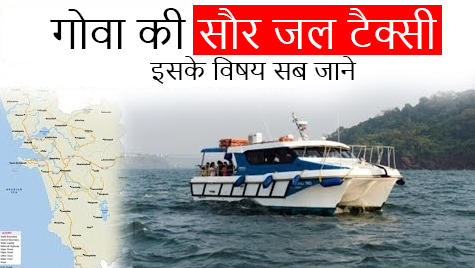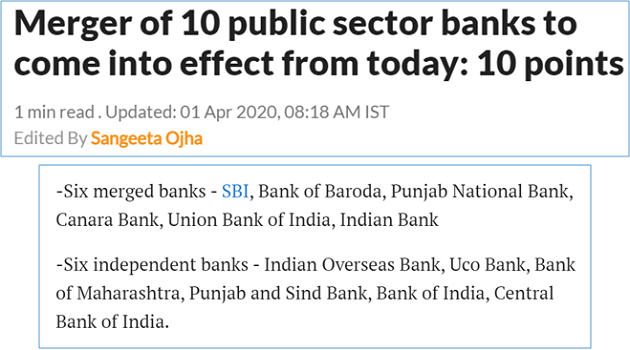Table of Contents
Topics to discuss
- Stressed Assets And Their Restructuring
- Urban Cooperative Banks
- Consolidation Of Public Sector Banks
- India’s Digital Finance Infrastructure
WHY IN NEWS
Stressed Assets And Their Restructuring
- Stressed assets in India are classified by RBI as Special Mention Accounts, NPAs, Loss assets etc.
Reasons for high percentage of stressed assets
- Borrower’s side: Domestic and global economic slowdown, willful default, diversion of funds by borrowers for purposes other than mentioned in loan documents and specific issues like volatility in prices of raw material and the shortage in availability of power etc.
- Bank’s side: Poor lending practices (like lending to borrowers with poor credit history), inadequate capacity to evaluate projects and absence of regular industrial visits.
- Other external factors: Economic condition of a region effected by natural calamities (like COVID-19), ineffective recovery tribunals, frequent change in government policies and administrative hinderances in Ease of Doing Business.
Steps taken by the Government
- Recognising NPAs transparently through Asset Quality Reviews and Joint Lenders’ Forum.
- Banks are now required to acquire Legal Entity Identifier (LEI) number from the borrower and report it to Central Repository of Information on Large Credit.
- Recapitalizing: Government of India announced recapitalization of PSBs to the tune of Rs. 2.11 lakh crore in October 2017, through infusion of capital by the Government and raising of capital by banks from the markets.
Resolving and recovering value from stressed accounts
- Insolvency and Bankruptcy Code, 2016 (IBC), has been enacted.
- Amendment to the Banking Regulation Act, 1949 to empower the RBI.
- Amendment to the Securitisation and Reconstruction of Financial Assets and Enforcement of Security Interest Act, 2002 to make it more effective.
- Project Sakshat: to resolve the problem of NPAs through a market-led approach
WHY IN NEWS
Urban Cooperative Banks
- Recently, Reserve Bank of India (RBI) imposed restrictions on withdrawals from the Punjab and Maharashtra Cooperative (PMC) Bank, one of the largest urban cooperative lenders.
- This has put the structural issues and governance issues of cooperative banks under focus.
About Urban Cooperative Banks (UCB)
- Co-operative banks, which are distinct from commercial banks, were born out of the concept of cooperative credit societies where members from a community band together to extend loans to each other, at favorable terms.
- Broadly, co-operative banks in India are divided into two categories – urban and rural
- Urban Cooperative Banks (UCBs) are registered as cooperative societies under the provisions of, either the State Cooperative Societies Act of the State concerned or the Multi State Cooperative Societies Act, 2002
About Urban Cooperative Banks (UCB)
- Regulation: The UCBs in India are under dual regulation, by the Reserve Bank of India (RBI) and the Registrar of Cooperative Societies (RCS) under the government.
Significance of UCB
- Catering urban class: UCBs are organised with the objective of promoting thrift and self-help among the middle class/lower middle-class population and providing credit facilities to the people.
- Financial inclusion: On account of their local feel and familiarity, UCBs were set up to ensure financial inclusion.
- Attractive interest rates: They offer attractive interest rates on deposits, far higher than commercial banks.
- Local nature: Due to their local nature, UCBs have an advantage over their commercial rivals in terms of having information both about upcoming business opportunities as well as borrower quality.
Issues faced by UCB
- Such banks are sometimes hijacked by vested political interests.
- RBI’s supervision of cooperative banks is not as stringent as that of commercial banks
- UCBs often borrow and lend among themselves, the collapse of one UCB can actually destabilise others. They have a small capital base. For example, urban cooperative banks can start with a capital base of Rs 25 lakh compared to Rs 100 crore for small finance banks.
- No clear-cut loan policy is practised by the Urban Co-operative Banks and even in a single bank also, the rules were varied from branch to branch.
WHY IN NEWS
Consolidation Of Public Sector Banks
- Government has approved the amalgamation of ten Public Sector Banks (PSBs).
- At present, India has 18 state owned banks compared with 27 in
- After the merger, the number will further come down to 12.
Benefits of Bank Consolidation
- Cost benefits as larger banks offer better economies of scale, efficiency, cost of funding, risk diversification.
- Revenue benefits (scope for large deals): Hence to invest in large projects, large banks with huge lending capacity are needed, to meet India’s aspirations of a $5 trillion GDP economy.
- The adoption of technologies across the amalgamating banks, access to a wider talent pool, and a larger database would lead PSB’s to be in a position to gain competitive advantage by leveraging analytics in a rapidly digitalizing banking landscape.
Benefits of Bank Consolidation
- Consolidation would help create banks with scale comparable to global banks and capable of competing effectively in India and globally enhancing their competitiveness.
- Improve regulation: Monitoring and control of a smaller number of banks will be easier after mergers.
Issues with Bank consolidation
- Too big to fail: When a big bank books huge loss or crumbles, there will be a big jolt in the entire banking industry. Its repercussions will be felt everywhere.
- May impact recovery of loans: Merger of public sector banks raises a considerable risk to the recovery process, which may differ from one bank to another.
Issues with Bank consolidation
- Banks having different setup: It brings with it issues not only of cultural and managerial alterations, but also various financial conflicts, that could affect lending as well as recovery. Conflicts might arise in the area of systems and processes too.
- Not necessarily beneficial: A study covering 20 years of bank consolidation in industrial countries found it “beneficial up to a relatively small size, but there is little evidence that mergers yield economies of scope, or gains in managerial efficiency”.
- India’s past experience too has been mixed so far.
WHY IN NEWS
India’s Digital Finance Infrastructure
- Recently, a Paper titled ‘The design of digital financial infrastructure: lessons from India’ was released by the Bank for International Settlements (BIS).
Status of digital payments in India
- A study by RBI on ‘Assessment of the progress of digitisation from cash to electronic’ has released following data:
- Digital payments in the country have witnessed a CAGR of 61% and 19% in terms of volume and value respectively over past five years, demonstrating a steep shift towards digital payments.
- 72% of India’s consumer transactions take place in cash, double the rate in China.
Status of digital payments in India
- Demand for high-value denominated currency has outpaced low-value denominated currency and this phenomenon may indicate that cash is increasingly used as a store of value and less for making payments.
- Cash in circulation (CIC) as a percentage of GDP is 11.2% in 2018-19 which is less than pre- demonetisation level of 12.1% in 2015-16
Recommendations of Committee on Deepening of Digital Payments chaired by Nandan Nilekani
- Removal of import duties from point-of-sale (POS) devices and waiving GST on IMPS.
- Government payments must be done through digital means, including payments for goods and services procured, Direct Benefit Transfer, salaries and pensions.
- Use of validation services such as Public Financial Management System and National Payments Corporation of India to reduce the incidence of transaction failure because of wrong account / Aadhaar details.
- Digital payment subcommittee should be setup at state level to map financial institutions and identify gaps and RBI should develop a Financial Inclusion Index to compare different areas.
Best Economy Current Affairs | Free PDF Download


























 WhatsApp
WhatsApp